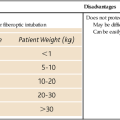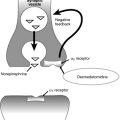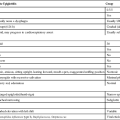Congenital heart disease: Congestive heart failure
Anesthetic management
Central to the anesthetic management of patients with CHF secondary to L-to-R shunting is to avoid increasing the shunt and pulmonary overcirculation. Repeated cardiopulmonary evaluations are important to identify influences on the patient that would increase systemic vascular resistance or decrease PVR (Table 202-1). One of the foremost responsibilities of the anesthesia team is to consider factors that may adversely affect shunt flow. However, the team must be cautious about the degree to which the L-to R-shunt is manipulated to reduce pulmonary overcirculation. Efforts to aggressively reduce systemic vascular resistance or increase PVR to reduce pulmonary overcirculation and, hence, improve CHF will lessen the L-to-R shunt; however, the ensuing hypotension or pulmonary hypertension, respectively, reduces coronary perfusion and stresses a poorly functioning right ventricle, leading to hemodynamic deterioration. In contrast, cyanotic CHD with R-to-L shunts can be improved dramatically with aggressive measures to increase systemic vascular resistance or decrease PVR, often in association with immediate hemodynamic improvement.
Table 202-1
Manipulations That Alter Pulmonary Vascular Resistance (PVR)
| ↑ PVR | ↓ PVR |
| Hypoxia Hypercarbia Acidosis Hyperinflation Atelectasis Sympathetic stimulation High hematocrit Surgical constriction |
O2 Hypocarbia Alkalosis Normal functional residual capacity (FRC) Low hematocrit Blocking sympathetic stimulation Nitric oxide |
If the intravenous route is not an option for induction of anesthesia, intramuscular or inhalation techniques may be used. For intramuscular induction, ketamine is the drug of choice for use when obtaining venous access by causing dissociative anesthesia. A major advantage of ketamine over other medications for intramuscular induction is the limited respiratory depression and maintenance of airway reflexes caused by ketamine, which increases safety until venous access is obtained. Halogenated inhalation agents have been used for induction for years in pediatric patients with CHD and CHF. In the past, the nonirritating airway effects of halothane made it a popular choice for induction, but the associated significant myocardial depression, bradyarrhythmia, and prolonged time to induction were particularly disadvantageous for neonates and infants with CHD, who responded with a greater degree of hypotension to the use of inhalation agents than do older children and adults. Hypotension occurs with the use of inhalation agents (see Chapter 66) as a result of a combination of reduced myocardial contractility, increased vasodilation, lower heart rate, and inhibition of compensatory reflex mechanisms.






